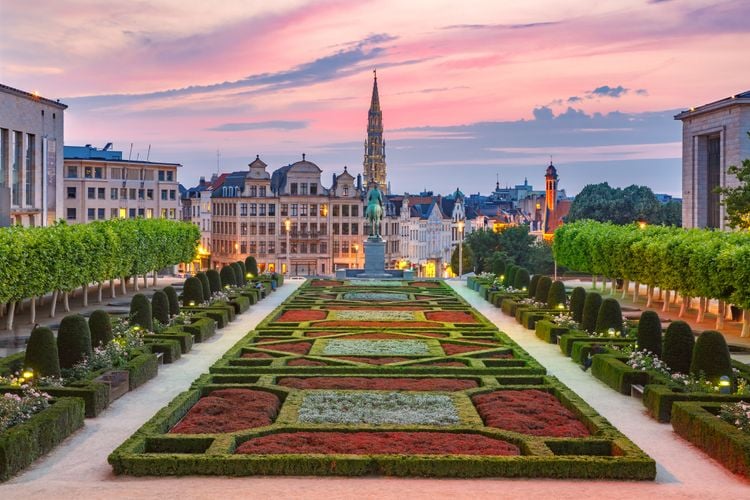The Grand-Place in Brussels is one of the most famous and most visited places in Belgium. Located in the heart of the city, it is surrounded by unique historical and architectural buildings that bear witness to Brussels' rich and complex history. In fact, its memories go back more than 700 years.
Often referred to as the most beautiful square in the world, the Grand-Place in Brussels is undoubtedly one of the most majestic sites in Belgium. Included on UNESCO's prestigious World Heritage List since 1998, it is considered by some to be the soul of the city. Indeed, its many buildings steeped in history and its maze of cobbled streets charm the hundreds of thousands of visitors who come to enjoy the attractions of the capital of Europe. Forming the heart of the city, it attracts crowds who come to admire its remarkable architecture. But a visit to the square also means travelling back in time and following in the footsteps of Belgian history. It's a unique place where public and private buildings mingle, as well as flamboyant Gothic, Baroque and classical styles, creating an exceptional and highly successful eclectic mix. Surely a reflection of the people of Brussels themselves.
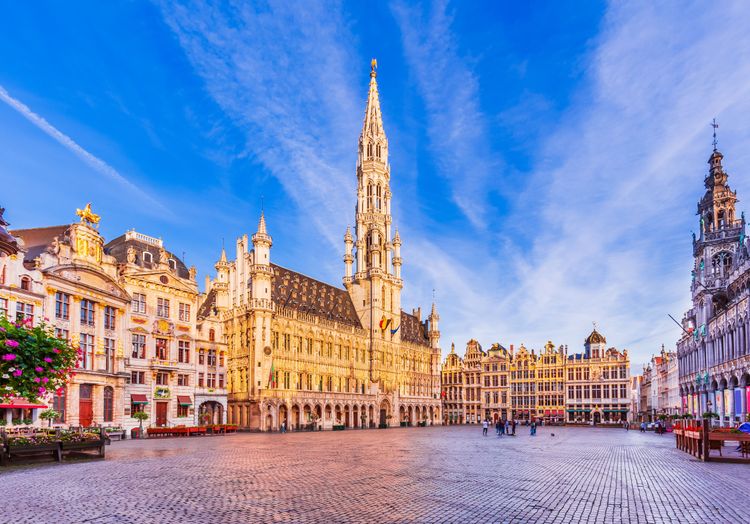
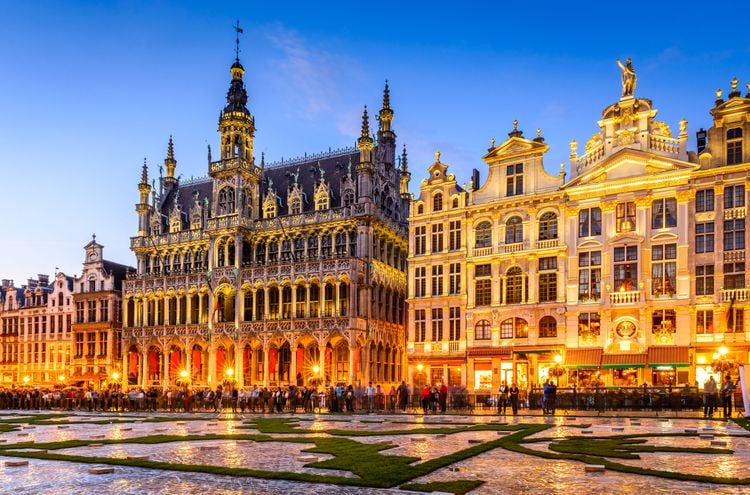
Wide angle on the Grand-Place in Brussels, Belgium.
- © ecstk22 / ShutterstockIn the Middle Ages, the Grand-Place was the economic centre of Brussels, surrounded by wooden houses and shops. In the 13th century, the Dukes of Lower Lotharingia built a fortified castle on one of the islands in the Senne (a Belgian river). This was the birthplace of Brussels. Towards the end of the 11th century, a market was set up near the castle on a drained marsh. The place was called the "lower market", or "Nedermerkt". This marked the beginning of the town's commercial development. The 14th century saw the emergence of the importance of the town's authorities thanks to the developments that took place around the square, but a number of wealthy merchants' houses were also built. This diversity of public and private buildings continues to this day.
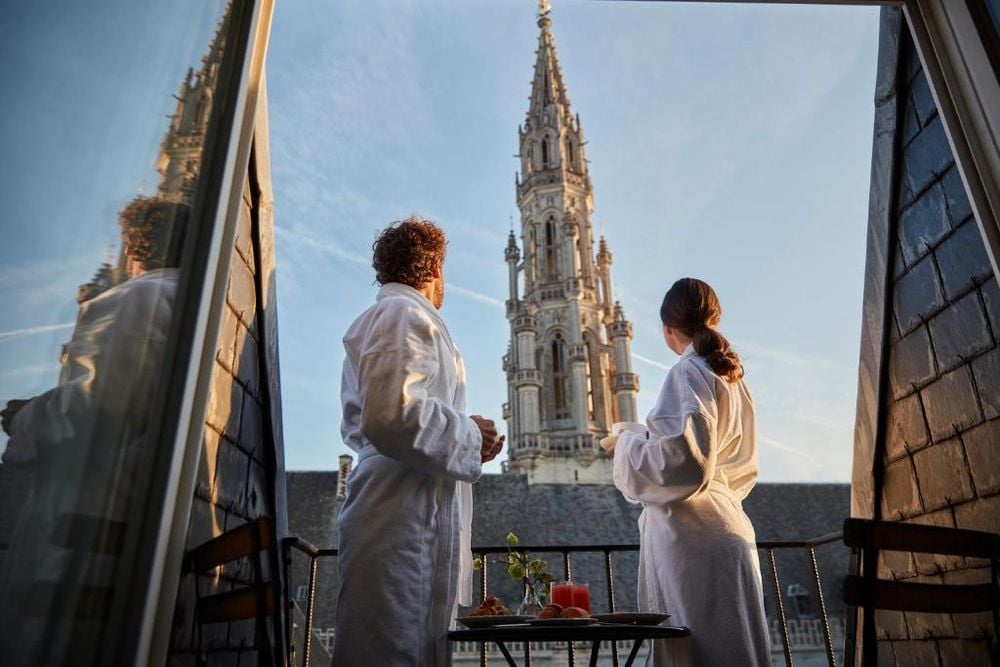 Brussels
Brussels
Rocco Forte Hotel Amigo
It's possible to stay in the heart of Brussels, in a room with a view of the Town Hall!In 1370, the Maison du Roi (King's House) was built here as the place where the people of Brussels paid their taxes. This building was the seat of Brussels' government and was considered to be one of the largest buildings in the city. Over time, other imposing buildings were constructed on the square, including the Palais de la Bourse and the Hôtel de Ville. Over the centuries, the buildings were replaced by larger and more imposing stone buildings, becoming a symbol of the wealth and power of Brussels.
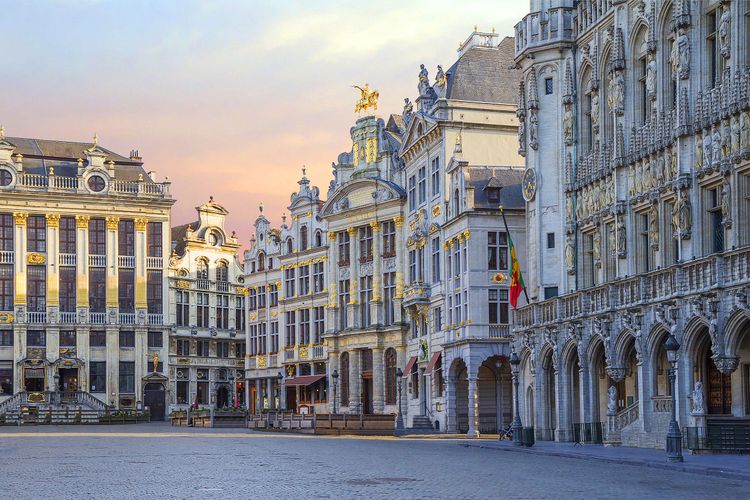
Grand-Place, Brussels, Belgium.
- © Galina Savina / ShutterstockUnfortunately, centuries, conflicts and wars have damaged the Grand Place, a symbol of the strength and power of Brussels. In 1695, the square was largely destroyed by French bombardments ordered by the troops of King Louis XIV. Almost completely destroyed, it was quickly restored and is now even more beautiful than before. In the 19th century, the Grand-Place became a symbol of Brussels' rich culture. It was the scene of many historic events, including the celebrations of the Jubilee of Belgian Independence in 1880 and the celebrations of the 500th anniversary of the city of Brussels in 1898. Today, the Grand-Place is a popular tourist centre, attracting thousands of visitors every year. It is considered one of the most beautiful squares in the world and is surrounded by historic buildings. In 1998, the Grand Place was designated a UNESCO World Heritage Site in recognition of its historical and cultural importance. It is a must-see for tourists visiting Brussels and a symbol of the city's cultural and historical wealth.
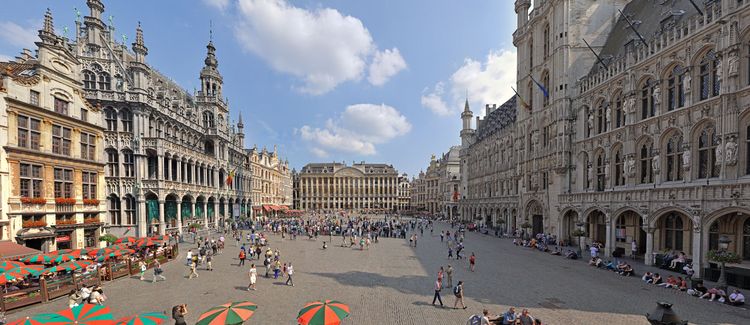
Grand-Place, panoramic view, Brussels, Belgium.
- © Jean Pierre De Neef / ShutterstockToday, the Town Hall is the only remaining example of medieval architecture. A 96-metre-high Gothic tower, its summit houses a statue of Saint-Michel, patron saint of Brussels, striking down a demon. For the record, the statue was removed in the 1990s and replaced by a copy, the original being kept in the city museum. Every inhabitant of Brussels knows the legend according to which the architect who designed the town hall committed suicide by throwing himself from the top of the belfry after realising that the tower was asymmetrical. His point of impact is symbolised by the star at the foot of the building. But this legend has it all wrong. In fact, the town hall was built in several stages and its asymmetry is mainly due to the marshy ground on which it is founded. Secondly, the star simply represents Brussels' kilometre zero, from which all distances to the capital are measured. This star is located in the courtyard of the Town Hall. Many tourists fail to visit this part of the Grand-Place, just as some Brussels residents don't even know it exists.
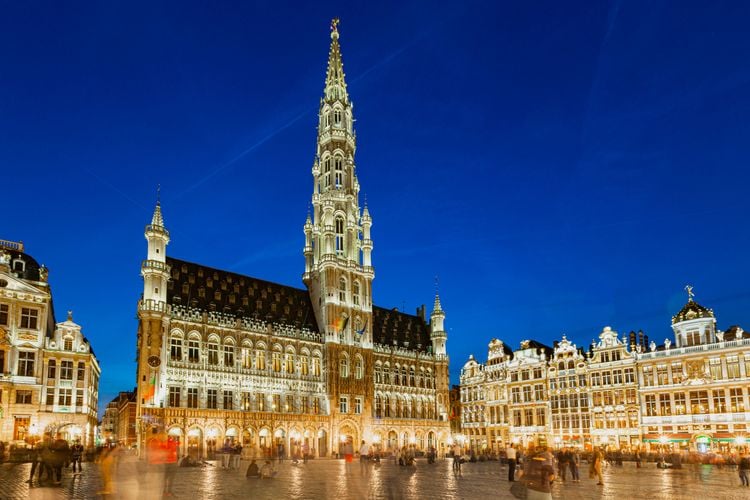
Brussels City Hall, Belgium.
- © Kadagan / ShutterstockThe Grand-Place in Brussels bears witness to the evolution of the city and its rich cultural, architectural and commercial history. Today, it is not only one of Belgium's most visited tourist attractions, where you can sit on one of the terraces and enjoy a good mussels and chips, a beer or a coffee while admiring the view. But it's also an important meeting point for Belgians. With concerts, performances and a magical Christmas market, it's a place where there's always something interesting and wonderful going on in the city! It's undoubtedly the starting point for a successful visit to Brussels.
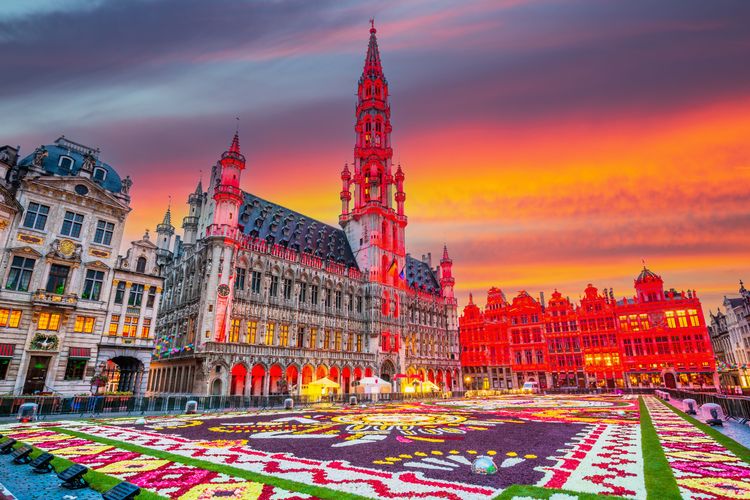
The Grand-Place during the Flower Carpet Festival, Brussels, Belgium .
- © SCStock / Shutterstock